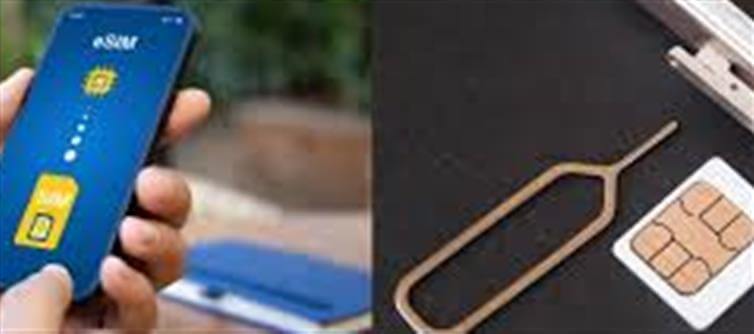
The world of mobile technology is evolving rapidly, and eSIM (Embedded SIM) is leading the charge. Slowly replacing traditional SIM cards, eSIM is being adopted by top telecom companies like Jio, Airtel, and Vi on select devices. But what exactly is eSIM, and how will it change the way indians use their phones? Here’s a complete guide.
1. What Exactly Is a Normal SIM Card?
SIM stands for Subscriber Identity Module – a small plastic chip that stores your mobile number, network details, and some contacts.
In India, nano-SIM is currently the standard size for most smartphones.
2. What Is eSIM and How Does It Work?
An eSIM is a wallet PLATFORM' target='_blank' title='digital-Latest Updates, Photos, Videos are a click away, CLICK NOW'>digital version of the traditional SIM card, embedded directly into your phone’s motherboard.
Activation is done digitally via a QR code or network settings – no need to insert or remove a physical card.
Supported Devices in India: iphone models, google Pixel, and select samsung Galaxy phones.
3. eSIM vs Normal SIM: Key Differences
Physical vs Digital: Normal SIM is a removable card, while eSIM is built-in.
Operator Switching: eSIM users can switch networks via QR code, no need to change physical SIM.
Security: eSIM cannot be lost or stolen, unlike a physical SIM.
Space-Saving: eSIM frees up internal space, enabling slimmer designs and larger batteries.
4. Benefits of eSIM for indian Users
a) Hassle-Free Operator Switching
No more visiting stores to get a new SIM – switch providers instantly via settings.
b) Safer & More Durable
Since it’s embedded, there’s no risk of loss, theft, or physical damage.
c) Perfect for Travelers
International plans can be activated instantly without buying a new SIM abroad.
d) Dual SIM Convenience
Many devices allow using eSIM with a physical SIM – one for work, another for personal use.
5. Challenges of eSIM in India
a) Limited Device Compatibility
Currently supported mostly in premium phones like iPhones and flagship Androids.
b) Complex Activation
Unlike physical SIMs that work immediately, eSIM requires QR code scanning and setup.
c) Transfer Issues
Switching eSIM between phones is not as instant as swapping a normal SIM.
d) Limited Telecom Support
Only Jio, Airtel, and Vi offer eSIM services; smaller operators lag behind.
e) Risk in Case of phone Loss
If your device is lost or damaged, you must request eSIM reactivation from the operator.
6. Is eSIM the Future of indian Telecom?
Despite initial limitations, eSIM is the next big leap in mobile connectivity. As more mid-range phones adopt the technology and telecom support widens, eSIM could become the new standard in the next few years.
Bottom Line
eSIM technology is set to revolutionize mobile communication in India, making SIM swapping and network switching faster, safer, and more convenient. But until affordable devices and wider operator support arrive, traditional SIM cards will continue to dominate.
.jpg)




 click and follow Indiaherald WhatsApp channel
click and follow Indiaherald WhatsApp channel